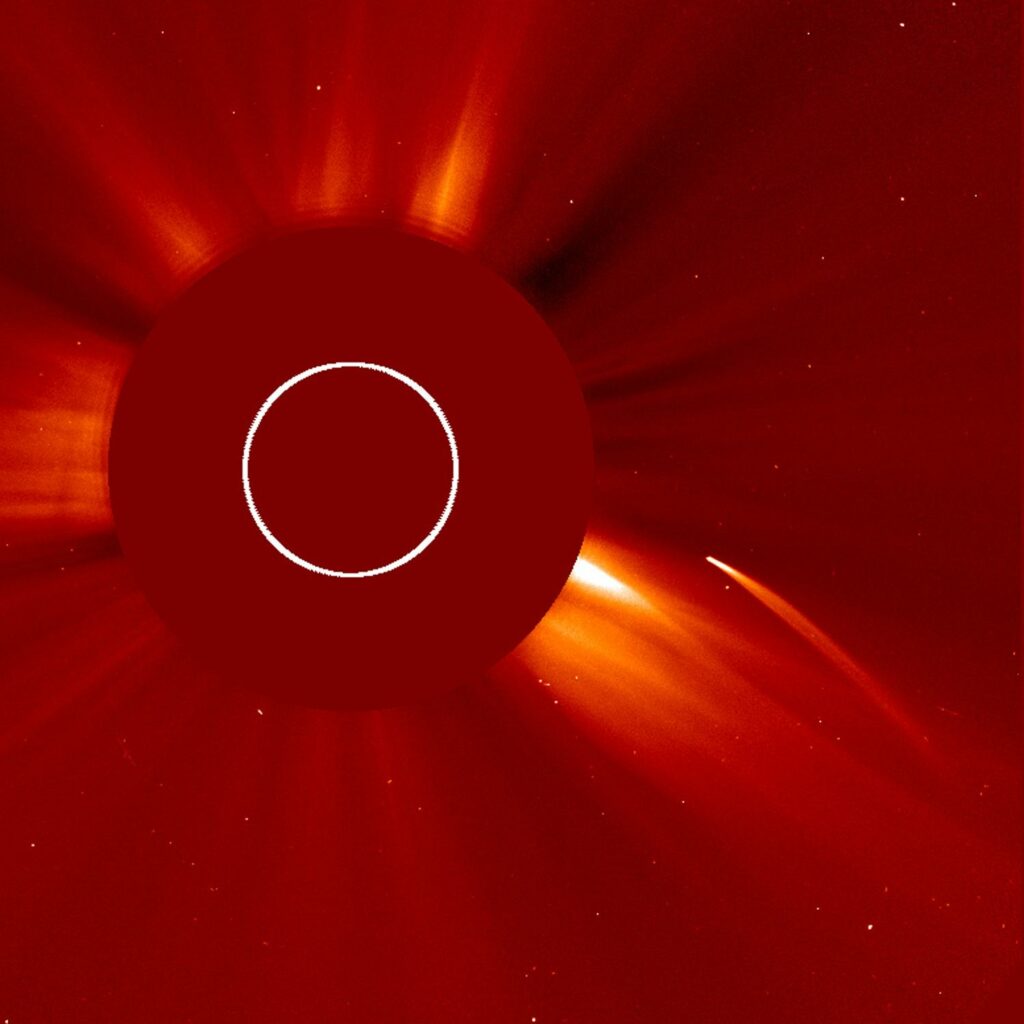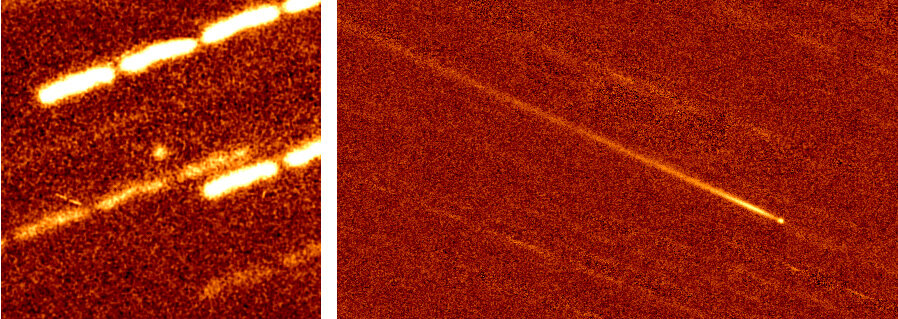Using a complex of both ground-based and space telescopes, an international team of astronomers obtained images of the decay of a “burnt out” comet that came close to the Sun. This is the first time such a body has been photographed during this process of destruction.
What is a near-sun comet
The solar system is a dangerous place for small celestial bodies, especially comets. Under the influence of gravity of other larger bodies, their orbits are destabilized, which often puts them on a trajectory of convergence with the Sun. Such comets are called near-sun comets.

Because these comets pass very close to the Sun, they are difficult to find and study. As a rule, they are detected by chance during observations using solar telescopes. But, even taking into account these circumstances, there are fewer near-sun comets than the models predict. This indicates that something is destroying them before they get a chance to meet the Sun.
Destruction of the near-sun comet 323P/SOHO
In an attempt to uncover the secrets of such bodies, an international team of astronomers performed a series of observations of the near-sun comet 323P/SOHO. They involved such powerful instruments as the Hubble, Subaru, Gemini North and CFHT telescopes. Subaru played a decisive role. Thanks to the wide field of view, it managed to photograph 323P/SOHO at the moment of approaching the Sun.

To the researchers’ surprise, 323P/SOHO changed a lot during its visit to the Sun. In the initial pictures, the object was just a dot. This indicated that it had completely lost its reserves of volatile substances, becoming a “burnt out” comet.
But then 323P/SOHO got a long dust tail. According to scientists, the intense radiation of our star led to the fact that parts of the comet broke off as a result of thermal destruction, similar to how ice cubes crack when a hot drink is poured on them. According to scientists, due to this process, 323P/SOHO could lose up to 10% of its mass. In addition, at least two fairly large fragments with a diameter of about 20 meters (with a total diameter of its core of 86 meters) subsequently broke off from the comet. All this clearly demonstrates what happens to near-sun comets and why there are relatively few such bodies.
323P/SOHO also surprised researchers with its very fast rotation period. The comet takes a little more than half an hour to complete one rotation. In addition, its color turned out to be unlike any other body in the Solar System. Therefore, scientists intend to conduct observations of other near-sun comets to find out if they have the same characteristics.
Earlier we talked about ESA’s plans to build a comet interceptor.
According to https://phys.org
Follow us on Twitter to get the most interesting space news in time
https://twitter.com/ust_magazine

